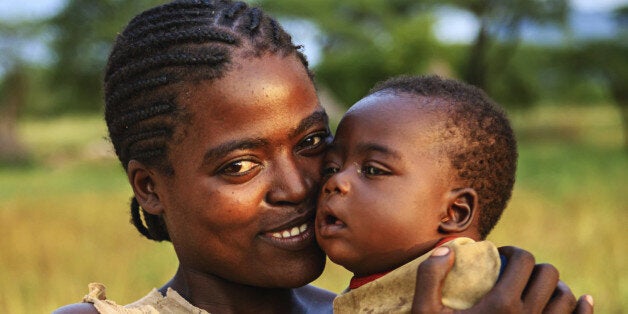
World leaders recently ratified the 17 Sustainable Development Goals, which set 169 ambitious targets to be achieved by 2030. Reaching these goals would greatly improve the lives of people worldwide. Women and girls have much to gain, especially because two of the targets call for ensuring universal access to sexual and reproductive health services, including family planning.
Given the contributions that family planning can make to nearly all 17 of the goals, we think that universal access to family planning could be a Sustainable Development Goal of its own. Still, the global community has taken a big step in the right direction.
Now, how can we ensure that universal access to family planning becomes a reality? Here are five ways.
1.Bring new and lower-cost contraceptive methods to market.
More than 225 million women in developing countries want to avoid or delay pregnancy but are not using an effective method of family planning. For many of these women, the currently available products do not meet their needs and preferences.
Some popular methods in the United States, such as the levonorgestrel-releasing intrauterine system (LNG-IUS), remain largely unavailable to women in developing countries because of cost. The introduction of more affordable products, such as the new LNG-IUS from Medicines360 and Sino-implant (II), can be game changing for diversifying the method mix accessible to women.
Researchers are also developing novel methods of long-acting, highly effective contraception, such as a biodegradable implant and a longer-acting injectable.
2.Focus on girls and youth.
More than 600 million girls ages 10-19 years live in developing countries. Unmet need for contraception is particularly high among these girls, and if they do become pregnant, they confront major health risks, discrimination, and educational and economic barriers. Given this, improving access to and use of contraception is particularly important for girls and youth.
Unfortunately, few young women are offered long-acting reversible methods, such as implants and intrauterine devices, which are 20 times more effective than short-acting methods, such as the oral contraceptive pill. The challenges for youth who want to use long-acting methods include lack of access, provider stigma, community resistance, and myths and misconceptions.
A consortium of organizations has recently released an important call to action to expand access to long-acting reversible contraception for young people. Not only should youth have access to these methods, they also need accurate information about method effectiveness using World Health Organization tier-based counseling. This kind of bold action is needed to ensure that youth are able to plan their reproductive future.
3.Ensure the safety of contraceptive use.
Modern methods of contraception are generally safe for most women and can provide important health benefits beyond preventing unintended pregnancy. However, important questions remain on how contraceptive use affects health. For instance, are women who use injectable hormonal contraceptives at an increased risk of acquiring HIV? The Evidence for Contraceptive Options and HIV Outcomes (ECHO) study, a randomized controlled trial of hormonal contraception and HIV acquisition, is getting underway to help women make more-informed decisions.
4.Conduct implementation science to reach the hardest to reach.
When we pilot innovative ideas, conduct implementation science and research utilization, and support scale-up of evidence-based practices, we ensure that the most effective interventions are put in place to help women and families achieve their reproductive desires.
Research has shown that task shifting and community-based family planning are important ways to reach women with a wider contraceptive method mix. For example, ten countries in sub-Saharan Africa have adopted policies to allow community health workers to provide injectable contraception. As a result, more than 70 million rural women now have greater access to this popular method of contraception.
An exciting new possibility is being evaluated in the field. Over-the-counter access and self-injection of Sayana Press, a new three-month contraceptive injectable in an easy-to-use, prefilled device, could be a breakthrough to increase access to family planning for women in rural Africa.
5.Advocate for family planning as a key ingredient to reaching a demographic dividend.
Family planning brings value for money in many ways. By protecting women from unintended pregnancies, it enables young women to stay in school and pursue economic opportunities. Family planning helps couples achieve their desired family size, which means more resources are available to feed, educate and support their children.
When demographic changes brought on by family planning align with children's health, education and economic opportunity, significant advances in overall development, known as the demographic dividend, can occur. A recent FHI 360 event in New York City discussed the potential benefits of a demographic dividend, particularly for young women.
As we begin working toward the Sustainable Development Goals, we need to reinforce the message that family planning is a centerpiece for sustainable development. And, by working with stakeholders to design and implement innovative, safe, effective programs to help women and girls use family planning, we will move closer to achieving our goals.